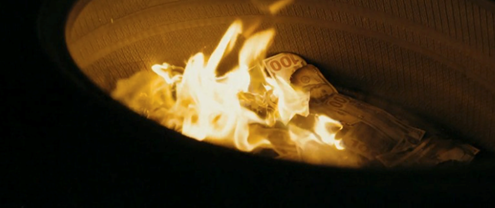How Multi-Zone Sourcing Can Save Your Supply Chain – And Your Sanity
Let’s face it, the past few years have been a crash course in supply chain fragility. If you’re a CEO or senior manager in manufacturing, you've...
All tasks in Shop Floor Management -
digitally supported with the functions of ValueStreamer®.
ValueStreamer® as a leadership tool supports the continuous improvement of processes and the optimization of collaboration.
Optimize processes in all areas of your business with digital Shop Floor Management. Learn more about the use cases.
2 min read
Stephan Albrecht
:
Sep 5, 2024 1:24:48 PM

A fascinating true story about a budgeting error that almost led to the collapse of the famous animation studio Pixar. The incident occurred in the early stages of production of the first "Toy Story" film.
In the early 1990s, Pixar transitioned from a computer hardware company to a fully-fledged animation studio. The initial contract with Disney to finance and distribute "Toy Story" put Pixar under considerable financial pressure to meet expectations. The budget for "Toy Story" was originally set at around 30 million dollars, which was modest by the standards of the major studios, but huge for a company like Pixar that had never produced a feature film before.
The financial and creative pressures at Pixar had a major impact on the creative direction of Toy Story. Early versions of the script contained a much darker tone, in which Woody was a more antagonistic character. Disney was not happy with this version, which led to a significant reworking of the script.
John Lasseter, the director of "Toy Story", mentioned in various interviews that these script changes were crucial. He said: "We went back to the drawing board and really thought about our characters to make Woody more sympathetic and the story more exciting." These changes were less about direct budget constraints and more about creative feedback and a desire to appeal to a wider audience.
Budget issues only influenced Pixar's fortunes in the later stages of production. According to a 2005 interview with Ed Catmull, the co-founder of Pixar, there were significant concerns about going over budget. He said: "We had to make tough decisions to stay within budget. Luckily we had Steve Jobs who was willing to cover some overruns, but we also learned to work incredibly efficiently."
The efficiency that was developed out of necessity in "Toy Story" was groundbreaking for Pixar's future projects. The company developed a culture of iterative feedback and cost-efficient production methods, which is also reflected in Catmull's book "Creativity, Inc.
Ed Catmull, co-founder of Pixar
Ed Catmull has often reflected on the balance between creativity and financial constraints: "You have to empower your creative talent to understand the budget, but not allow financial pressures to stifle creativity."
Although the narrative that a budget mistake changed the fate of Pixar through "Toy Story" is a simplification, the greater truth lies in how Pixar overcame financial challenges and creative revisions to produce a groundbreaking film. The real story is about adaptation and the interplay of creativity and constraints - a lesson that many other companies can learn from.

Let’s face it, the past few years have been a crash course in supply chain fragility. If you’re a CEO or senior manager in manufacturing, you've...

What’s Going Wrong, and What You Can Do About It If you manage a mid-level manufacturing company, you know the pressure of meeting yearly goals. But...

When we think of Halloween, images of haunted houses, spooky masks and eerie fog may come to mind. But what if we told you that these elements are...

Introduction

In many companies, the year begins and ends with a time-consuming process: annual budget planning. Managers and executives spend countless hours...

Recognize your budget burners Careful annual budget planning is crucial for manufacturing companies (SMEs) to ensure financial stability and achieve...